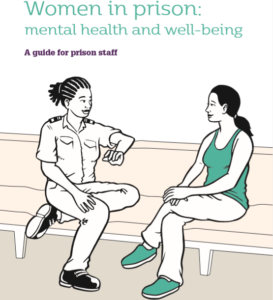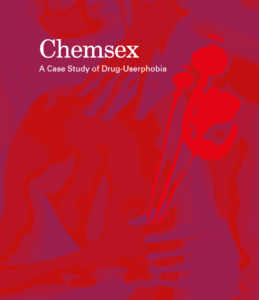 Author: Ingrid Hein
Author: Ingrid Hein
An epidemic of drug-resistant tuberculosis (TB) is mounting in Eastern Europe, and without intervention on multiple fronts there is little hope the spread will slow. For several years, we have been hearing that there is “a need for urgent action,” said Daria Podlekareva, MD, PhD, from Rigshospitalet at the University of Copenhagen. It needs to be addressed now, she told Medscape Medical News.
However, cultural and political issues mean that it is “not always easy to adopt international guidelines or initiate research projects,” she said at the International AIDS Society 2017 Conference in Paris.
“It’s difficult to go into Eastern Europe and initiate projects and do studies,” she explained. “Some Eastern Europe countries are still behind an iron wall.”
It can be easier to conduct research into infectious disease in other places — even African countries — than in most formerly Soviet Union countries. To help curb the epidemic in Eastern Europe, the World Health Organization (WHO), the Stop TB Partnership, and the European Union should collaborate to encourage governments to recognize TB as a public health emergency and to implement international programs and standards of care, said Dr Podlekareva.
Eastern Europe Is a “Perfect Storm” for TB
TB continues to be a major public health issue, according to the 2017 WHO report — Tuberculosis Surveillance and Monitoring Report in Europe 2017 — released in March. Most of the 323,000 new TB cases and the 32,000 deaths due to TB in the WHO European Region in 2015 occurred in Eastern Europe and Central Asia.
Eastern Europe is a “perfect storm” for the spread of TB because it has high rates of incarceration, HIV infection, and injection drug use, and it has disintegrated healthcare systems, suboptimal TB diagnosis and treatment, and poor adherence rates, Dr Podlekareva said.
In addition, nearly half of all TB cases are multidrug-resistant, which requires longer, more expensive treatment than drug-susceptible TB, and leads to more adverse effects. Treatment is also less accessible in the region.
And because rates of HIV infection are on the rise in Eastern Europe, where antiretroviral therapy coverage is low, the fast progression of immunosuppression leads to increases in the rate of TB and HIV coinfection.
More Likely to Die From TB in Eastern Europe
In an international cohort study on the management of concurrent HIV and TB, Dr Podlekareva and her colleagues found that TB-related deaths were significantly more common in Eastern Europe than in Western Europe or Latin America (Lancet HIV. 2016;3:e120-e131).
In that study, 1406 consecutive HIV-positive patients aged 16 years or older with a tuberculosis diagnosis were followed up for 12 months at one of 62 HIV and tuberculosis clinics in 19 countries.
The prognosis was far worse for the 834 patients treated in Eastern Europe than for the 317 treated in Western Europe or the 255 treated in Latin America.
Of the 264 (19%) deaths in the study cohort, 188 (71%) were related to tuberculosis.
| Cause of Death | Eastern Europe, % | Western Europe, % | Latin America, % | P-Value |
|---|---|---|---|---|
| All | 29 | 4 | 11 | <.0001 |
| TB | 23 | 1 | 4 | <.0001 |
In Eastern Europe, diagnosis is often made on the basis of clinical judgment, not laboratory confirmation, she pointed out. And treatment is often suboptimal, including very few active drugs. Moreover, disintegrated healthcare systems in Eastern Europe are detrimental to treatment, and care centers for TB and HIV are not combined. Plus, opiate-substitution therapy — an effective treatment for drug dependence — is limited or prohibited in most regions.
“Nearly 40% of our cohort had multidrug-resistant TB,” Dr Podlekareva reported.
Eastern Europe does not have to invent its own solutions; it can adopt “what we already know,” she told Medscape Medical News. Experience from the 1980s HIV epidemic in Western countries can be a guide. There are thousands of publications on the strategies and standards of care that work.
Prisons and Drugs Contribute
In Russia, illicit drug use is a criminal offense, and “methadone treatment is prohibited,” Dr Podlekareva said. “In Eastern European countries, like the Ukraine and Belarus, there are some drug-treatment programs, but they are not widely used as a standard of care.”
With no methadone support and very few social supports for injection drug users, access to treatment, adherence, and retention in care are a challenge.
Clinicians need to ramp up their efforts to convince patients to get treated. “There is a need for clinicians to be more willing to work together, to support these patients,” she said. “When we ask why a patient is not on antiretroviral therapy, they say the patient refused it, but I think it’s the clinician’s task to convince the patient.”
When injection drug users are thrown in jail, as they are in Russia, TB transmission proliferates, Dr Podlekareva explained. A previous study showed that intrapopulation transmission in prisons, population-to-prison transmission, intraprison transmission, and prison-to-population transmission have driven overall population-level differences in TB incidence, prevalence, and mortality rates in countries of the former Soviet Union (Proc Natl Acad Sci USA.2008;105:13280-13285.
She is not alone in her assessment. “The problem in Eastern Europe will not go away, especially multidrug-resistant TB, if the infrastructure is not improved,” said Christoph Lange, MD, from the tuberculosis unit of the German Center for Infection Research and Research Center Borstel in Germany.
“Patients have been getting treatment on and off,” so new strains of multidrug-resistant TB are emerging, he told Medscape Medical News. “People are now getting infected with drug-resistant strains,” and most Eastern European countries are not equipped to treat multidrug-resistant TB.
Dr Lange said that in the past year he has seen five Armenian patients with multidrug-resistant TB looking for treatment at his clinic. He referred to them as “health-seeking migrants,” and said, “we expect to see more.”
“The number of people with drug-resistant TB is increasing more than 20% every year,” he reported. The current targets of elimination are not credible and they don’t work under the current circumstances; health organizations and governments have to acknowledge that.
“Instead of having the goal of elimination, we need to work toward low incidence,” Dr Lange said. “We have to redefine our goals and address what is most endangering public health.”
Drs Podlekareva and Lange have disclosed no relevant financial relationships.
Source: International AIDS Society (IAS) 2017 Conference. Presented July 2017.



